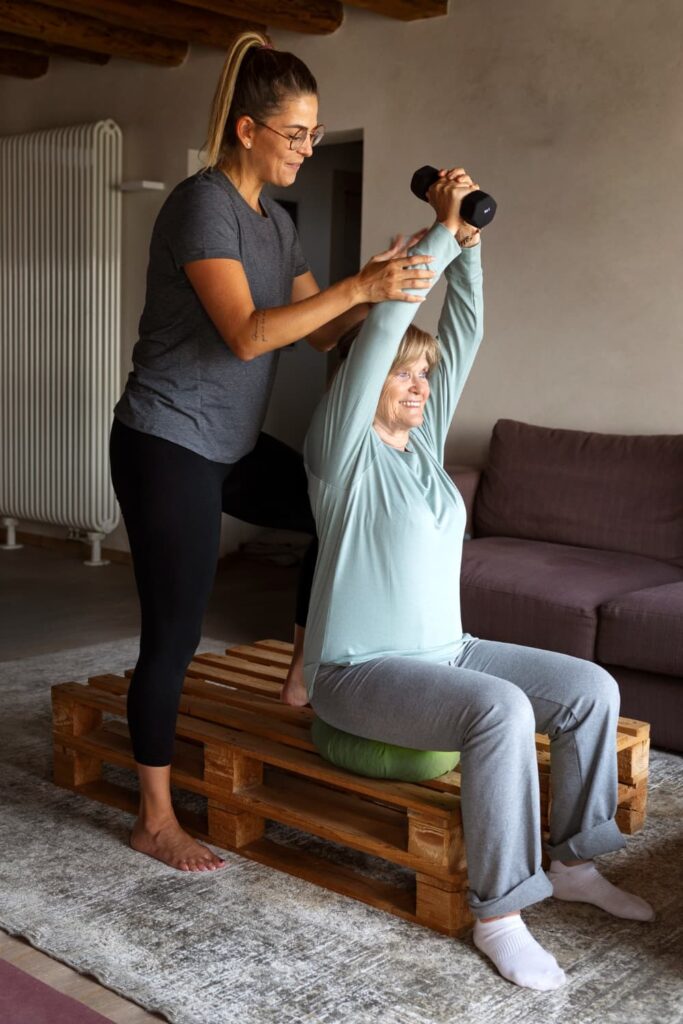Yoga teacher training near me is a popular search for those who wish to turn their passion for yoga into a rewarding career. This article will guide you through the benefits of becoming a yoga teacher, how to find the right program, what to expect, and much more. By the end, you’ll have a clear path to starting your journey as a certified yoga instructor.
Table of Contents
Introduction to Yoga Teacher Training
Yoga teacher training (YTT) is a transformative journey that not only deepens your practice but also equips you with the skills to teach others. Many individuals search for yoga instructor training near me to find convenient, high-quality programs. This introduction will set the stage for understanding why YTT is a worthwhile endeavor.
Benefits of Yoga Teacher Training
Benefits of Becoming a Yoga Teacher
Becoming a yoga teacher offers numerous benefits. For starters, it provides personal growth and the opportunity to deepen your practice. Many find that teaching yoga enhances their physical well-being, improves mental clarity, and brings a sense of purpose and fulfillment. Plus, it opens up professional opportunities in studios, gyms, and private sessions.
Impact on Mental Health
Yoga teacher training can have a profound impact on your mental health. The practice of yoga promotes stress reduction and mindfulness, which are crucial for maintaining mental balance. Through meditation and mindful movement, many people find a greater sense of peace and mental resilience.
Finding the Right Program
How to Choose a Yoga Teacher Training Program
Choosing the right YTT program is essential. Look for programs that are accredited and certified by recognized organizations like Yoga Alliance. Consider the style of yoga offered—whether it’s Hatha, Vinyasa, Ashtanga, or another form. Additionally, check the qualifications of the instructors and the class size to ensure a more personalized experience.
Local vs. Destination Training
When deciding between local and destination training, there are several factors to consider. Local training allows you to stay close to home, making it easier to manage daily responsibilities. On the other hand, destination training can be an immersive experience, offering a retreat-like atmosphere. Weigh the pros and cons to determine what’s best for your lifestyle and goals.
What to Expect
Curriculum and Structure
A typical YTT curriculum covers a wide range of topics. You’ll study anatomy, yoga philosophy, teaching methodologies, and more. Programs vary in length, but most are around 200 hours, spread over several weeks or months. Expect a mix of practical and theoretical learning with plenty of hands-on teaching practice.
Costs and Financial Considerations
YTT programs come with various costs. Tuition fees can range widely depending on the program’s location and prestige. Be prepared for additional expenses such as books, travel, and accommodation if you’re considering a destination program. It’s important to budget accordingly to avoid financial stress during your training.

Preparing for the Training
Physical Preparation
Physical preparation is key for a successful YTT experience. Make sure you’re practicing yoga regularly to build the strength and flexibility needed for intensive training. Incorporating a daily yoga routine can help condition your body and prevent injuries.
Mental and Emotional Preparation
Equally important is preparing mentally and emotionally. Set clear intentions for your training journey and build a support system of friends, family, or fellow yogis. This will help you stay focused and motivated throughout the program.
Preparing for Yoga Teacher Training
Physical Preparation
Getting ready physically for your yoga teacher training is crucial. Regular yoga practice will build the strength and flexibility needed for the intensive sessions ahead. Focus on a daily routine that includes various yoga styles like Hatha and Vinyasa to condition your body and prevent injuries. Remember, the goal is to be fit enough to handle long hours of practice without strain.
Here are some tips to help you get started:
- Daily Practice: Commit to practicing yoga every day, even if it’s just for 20 minutes.
- Strength Training: Incorporate exercises that build core strength, such as planks and abdominal work.
- Flexibility Exercises: Regularly stretch major muscle groups to increase your range of motion.
- Rest and Recovery: Don’t forget to give your body time to rest and recover, as overtraining can lead to injuries.
Mental and Emotional Preparation
Preparing mentally and emotionally is just as important as physical preparation. Yoga teacher training is not only a physical journey but a profound mental and emotional one too. Setting clear intentions and building a support network will help you stay grounded and focused throughout the training.
Here are some ways to prepare:
- Set Clear Intentions: Define what you hope to achieve from the training. This could be personal growth, teaching skills, or a deeper understanding of yoga.
- Mindfulness Practices: Engage in activities that promote mindfulness, such as meditation and journaling. This will help you stay present and manage stress.
- Build a Support System: Connect with friends, family, or fellow yogis who can offer encouragement and support.
- Stay Positive: Keep a positive mindset and be open to the transformative experiences that yoga teacher training will bring.
By preparing both physically and mentally, you’ll be ready to embrace the challenges and rewards of yoga teacher training. This foundation will not only help you succeed in your training but also set you up for a fulfilling career as a yoga instructor.
Post-Training Journey
Career Paths After Certification
Congratulations, you’ve completed your yoga teacher training! Now, let’s look at the exciting career paths that await you. With your certification, you’re ready to share your passion for yoga and help others on their journey.
- Teaching at Studios: Many new instructors start by teaching at local yoga studios. This is a great way to gain experience and build a following.
- Private Sessions: Offering one-on-one sessions can be highly rewarding and allows for personalized instruction tailored to individual needs.
- Workshops and Retreats: Hosting workshops or retreats can be an excellent way to connect with a broader audience and dive deeper into specific aspects of yoga.
- Online Classes: With the rise of digital platforms, many instructors are finding success teaching yoga online. This can expand your reach far beyond your local community.
Continuing Education and Specializations
The journey doesn’t end with your initial certification. Continuing education is crucial for staying current and expanding your skills. Here are some ways to further your education:
- Advanced Certifications: Consider pursuing advanced certifications, such as a 500-hour training, to deepen your knowledge and expertise.
- Specializations: Specializing in specific areas, like prenatal yoga, yoga therapy, or children’s yoga, can open up new teaching opportunities and allow you to cater to diverse student needs.
- Workshops and Seminars: Attend workshops and seminars to stay updated on the latest trends and techniques in the yoga world.
Building Your Yoga Community
Creating a supportive yoga community is key to a successful teaching career. Engage with your students, attend local events, and collaborate with other instructors. A strong community not only supports your growth as a teacher but also enriches the experience for your students.
Here are some tips for building your community:
- Social Media Presence: Use social media to connect with your students and share valuable content. Platforms like Instagram and Facebook are great for this.
- Networking Events: Attend yoga-related events and workshops to meet other professionals and potential students.
- Community Classes: Offer free or donation-based classes to give back to your community and attract new students.
Keeping the Passion Alive
Teaching yoga is incredibly rewarding, but it’s essential to keep your passion alive. Remember why you started this journey and continue to practice regularly. Stay curious, keep learning, and most importantly, enjoy the process.
By embracing these career paths and continuing your education, you’ll not only grow as a teacher but also inspire and support your students in their yoga journeys.
Related Article: Kundalini Yoga Near Me: Find the Best Classes and Studios
Testimonials and Reviews
Success Stories from Graduates
One of the most inspiring aspects of yoga teacher training near me is hearing the success stories of graduates. These testimonials highlight the transformative power of yoga and the impact of quality training programs.
Jane’s Journey: From Student to Teacher “I started my yoga teacher training with a love for yoga but little confidence in my ability to teach. The supportive community and comprehensive curriculum completely transformed my outlook. Today, I teach at three studios and offer private sessions. The experience was life-changing!”
Mark’s Path to Mindfulness: “Yoga has always been my sanctuary. The training deepened my practice and understanding of yoga philosophy. Now, as a certified instructor, I help others find peace and mindfulness through yoga. The program was intense but incredibly rewarding.”
Samantha’s Story: Embracing Change “Switching careers to become a yoga teacher was a big leap. The training program provided me with the skills and confidence I needed. I now teach full-time and couldn’t be happier. Seeing my students grow and benefit from yoga is the best part of my job.”
Importance of Reviews
When looking for yoga teacher training programs near me, reviews play a crucial role. They offer insights into the quality of the program, the instructors, and the overall experience. Positive reviews can reassure potential students that they’re making the right choice.
Reading Reviews: What to Look For
- Instructor Expertise: Look for reviews that highlight the qualifications and teaching style of the instructors.
- Program Structure: Find out if the curriculum is well-organized and comprehensive.
- Student Support: Check if the program provides adequate support and resources for students.
Sharing Your Experience
If you’ve completed a yoga teacher training program, consider sharing your experience. Your story can inspire others and help them choose the right program. Whether it’s through social media, a blog, or review platforms, your voice matters.
Tips for Writing a Review
- Be Honest: Share both the positives and any challenges you faced.
- Be Specific: Mention specific aspects of the program that stood out to you.
- Encourage Others: Highlight how the training has impacted your life and career.
By reading and sharing testimonials and reviews, prospective students can make informed decisions about their yoga teacher training journey. Personal stories and honest feedback are invaluable resources for anyone considering this transformative path.
FAQs
What are the prerequisites for joining a yoga teacher training program?
Most yoga teacher training programs require a consistent yoga practice of at least six months to a year. Some programs may ask for a letter of recommendation from a current yoga instructor. It’s also helpful to have a genuine passion for yoga and a desire to teach.
How long does it take to become a certified yoga teacher?
The duration of yoga teacher training programs can vary. The standard 200-hour program typically takes about 3 to 6 months to complete if done part-time. Intensive programs can be completed in as little as 4 weeks. Advanced 500-hour programs will take longer, often up to a year or more.
Can I teach yoga part-time?
Absolutely! Many yoga instructors start by teaching part-time. This allows you to gain experience and build a client base while still maintaining other employment. Part-time teaching can be done at yoga studios, gyms, community centers, or even offering private sessions.
Is online yoga teacher training effective?
Yes, online yoga teacher training can be very effective, especially if you have a disciplined approach. Many reputable organizations now offer comprehensive online programs that cover all the necessary components, including live classes, video lessons, and interactive support. However, it’s important to ensure the program is accredited by a recognized body like Yoga Alliance.
How much does yoga teacher training cost?
The cost of yoga teacher training varies widely depending on the location, duration, and reputation of the program. On average, a 200-hour training can cost between $2,000 to $3,500. Additional expenses might include books, props, and travel if you’re attending an in-person program.
What job opportunities are available after completing yoga teacher training?
After completing your training, you can work in yoga studios, gyms, and wellness centers. Many instructors also offer private sessions, teach at corporate events, or host workshops and retreats. With the rise of online platforms, teaching yoga classes virtually has also become a popular option.
What should I look for in a yoga teacher training program?
When choosing a program, consider the following:
Accreditation: Ensure the program is accredited by a recognized organization like Yoga Alliance.
Curriculum: Look for a well-rounded curriculum that includes anatomy, philosophy, teaching methodology, and practice.
Instructor Experience: Research the qualifications and experience of the instructors.
Reviews: Read testimonials and reviews from past students to get a sense of their experiences.







